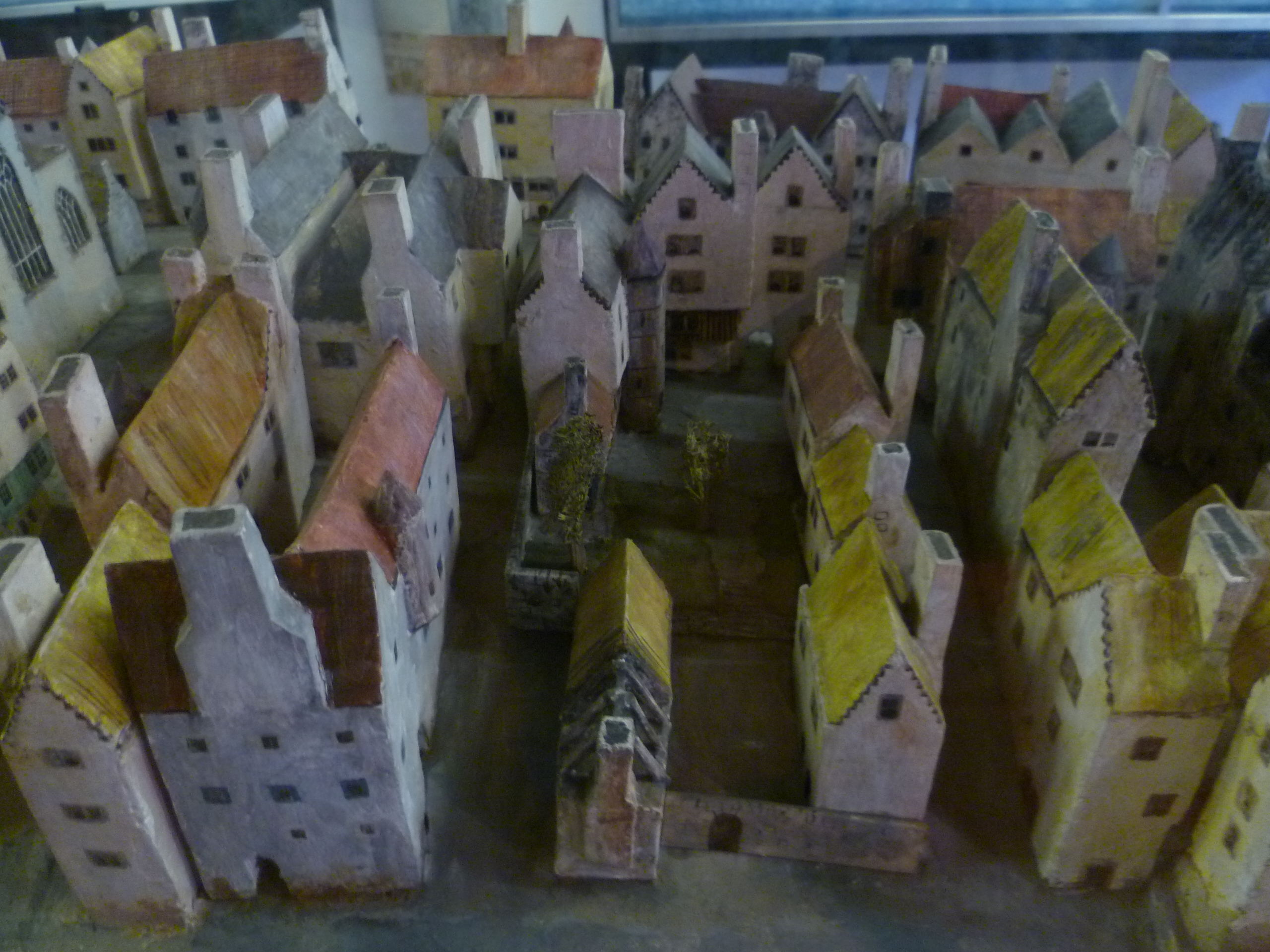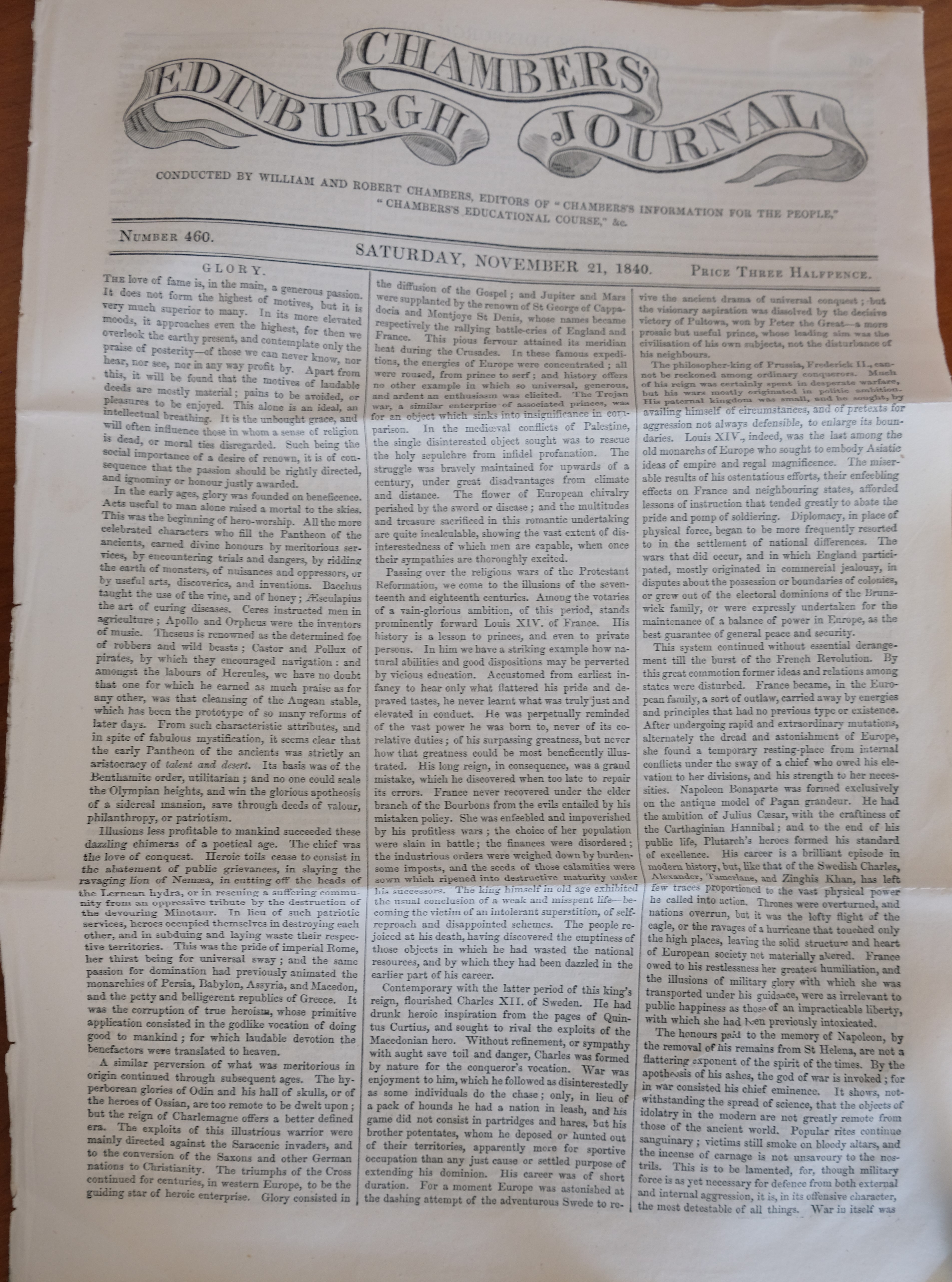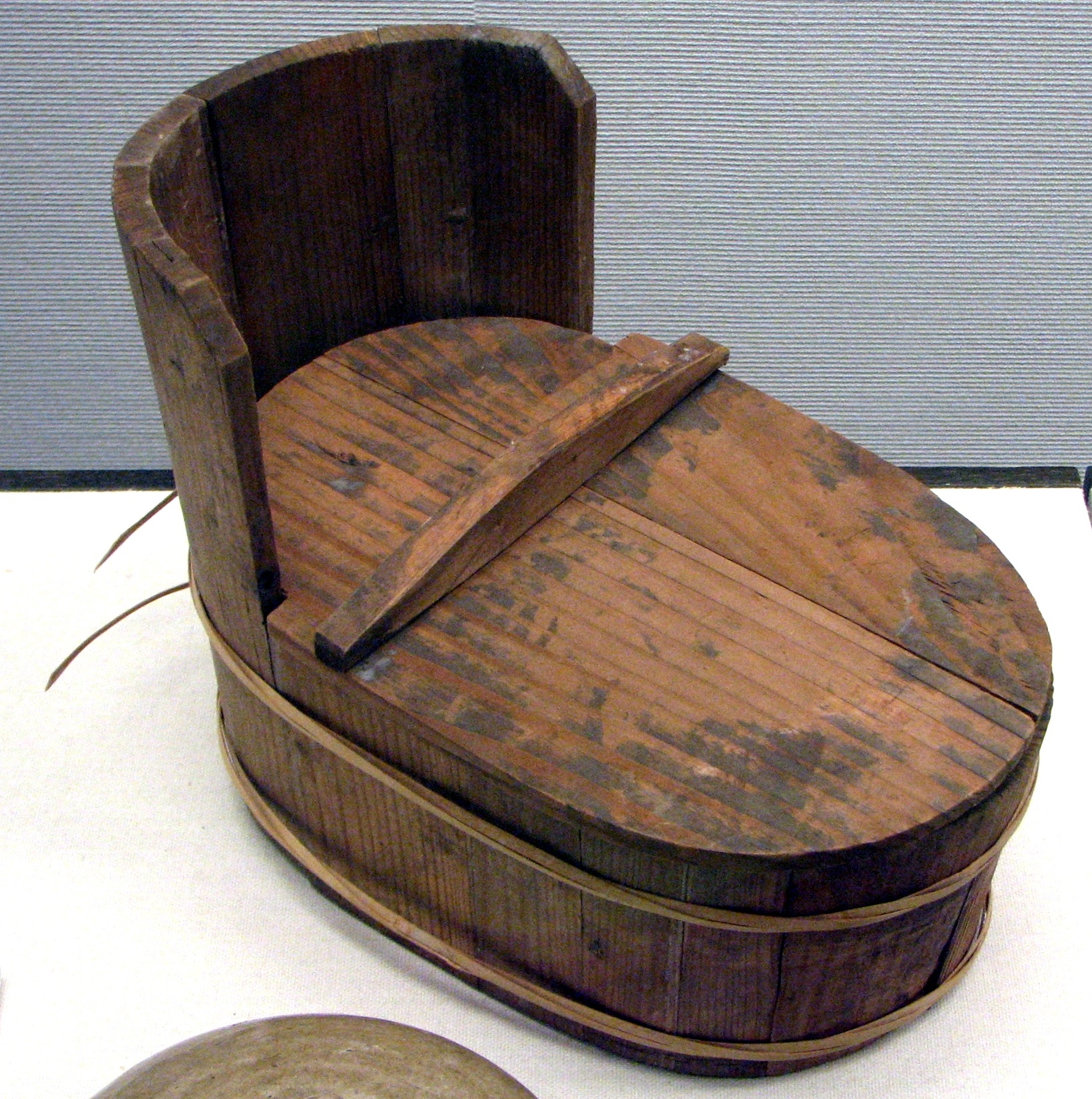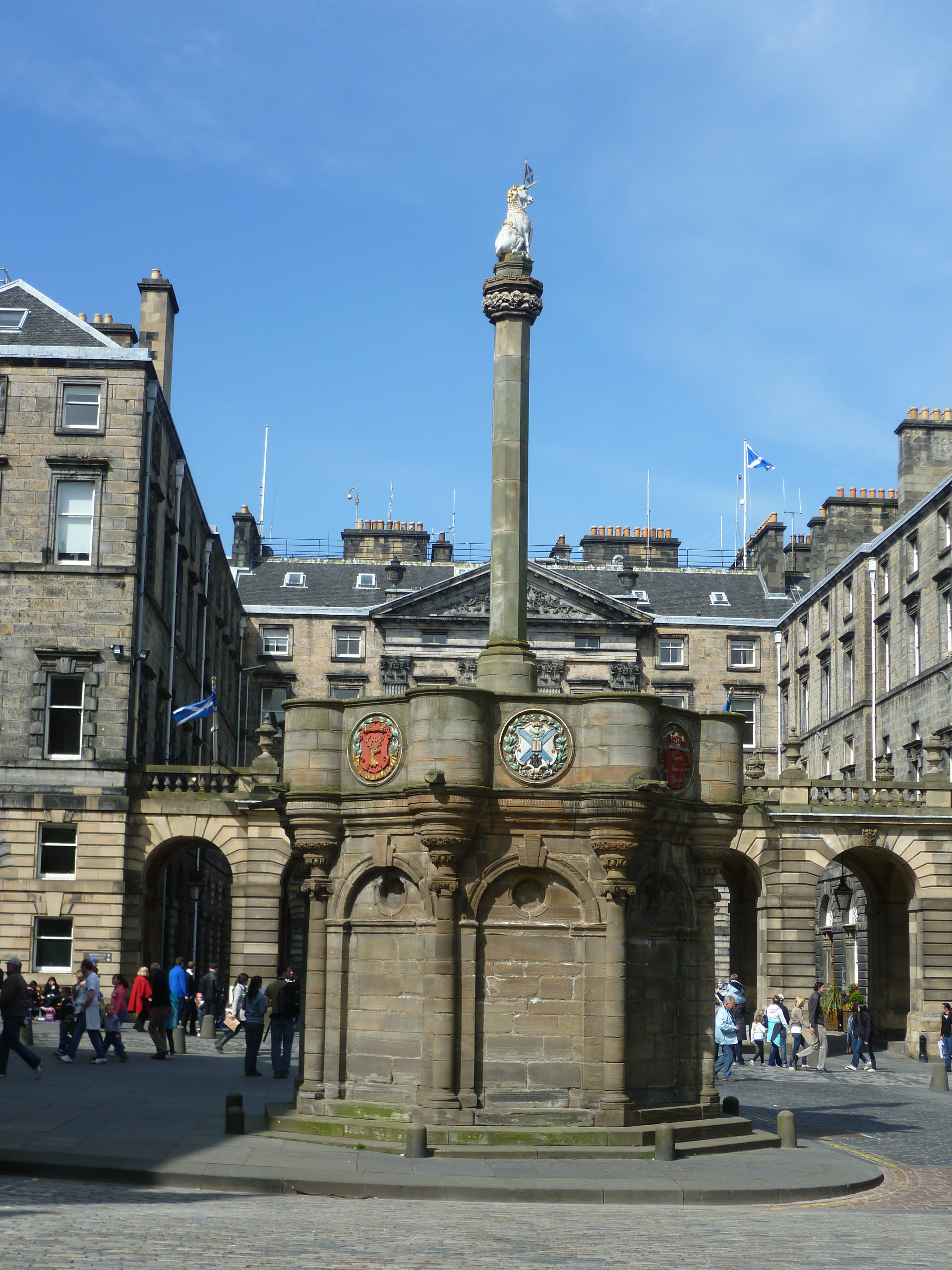|
Caddie (historical Occupation)
A caddie, also spelt "cadie", was an urban occupation in early 18th century Scotland ("in Edinburgh and other large towns") that consisted of running various errands. The term is a Scottish form of the French word ''cadet'' (student soldier). Origin Writing in the middle of the 18th century, the first historian of Edinburgh, William Maitland, described "cadees" as "errand-men, news-cryers or pamphlet-sellers" existing before 1714. As of that date they became an organised society subject to regulation and supervision by the Town Council, which was responsible for upholding the monopoly of its members' activities within the city. Magistrates on the Council determined the number of members, each of whom was issued with an "apron of blue linnen" to be worn as a badge of identification "which none may lend, on pain of losing his privilege". On joining the Company each new member paid a deposit of 10 pounds Scots, as a surety for honesty and good behaviour, and the sum of 14 shilli ... [...More Info...] [...Related Items...] OR: [Wikipedia] [Google] [Baidu] |
View Of Old Town With St Giles And Tron Spires
A view is a sight or prospect or the ability to see or be seen from a particular place. View, views or Views may also refer to: Common meanings * View (Buddhism), a charged interpretation of experience which intensely shapes and affects thought, sensation, and action * Graphical projection in a technical drawing or schematic ** Multiview orthographic projection, standardizing 2D images to represent a 3D object * Opinion, a belief about subjective matters * Page view, a visit to a World Wide Web page * Panorama, a wide-angle view * Scenic viewpoint, an elevated location where people can view scenery * World view, the fundamental cognitive orientation of an individual or society encompassing the entirety of the individual or society's knowledge and point-of-view Places * View, Kentucky, an unincorporated community in Crittenden County * View, Texas, an unincorporated community in Taylor County Arts, entertainment, and media Music * ''View'' (album), the 2003 debut album ... [...More Info...] [...Related Items...] OR: [Wikipedia] [Google] [Baidu] |
List Of Closes On The Royal Mile
The Old Town of Edinburgh, Scotland, consisted originally of the main street, now known as the Royal Mile, and the small alleyways and courtyards that led off it to the north and south. These were usually named after a memorable occupant of one of the apartments reached by the common entrance, or a trade plied by one or more residents. Generically such an alleyway is termed a close , a Scots term for alleyway, although it may be individually named close, entry, court, or wynd. A close is private property, hence gated and closed to the public, whereas a wynd is an open thoroughfare, usually wide enough for a horse and cart . Most slope steeply down from the Royal Mile creating the impression of a herring-bone pattern formed by the main street and side streets when viewed on a map. Many have steps and long flights of stairs. Because of the need for security within its town walls against English attacks in past wars, Edinburgh experienced a pronounced density in housing. Closes ... [...More Info...] [...Related Items...] OR: [Wikipedia] [Google] [Baidu] |
Henry Cockburn, Lord Cockburn
Henry Thomas Cockburn of Bonaly, Lord Cockburn ( ; Cockpen, Midlothian, 26 October 1779 – Bonaly, Midlothian, 26 April/18 July 1854) was a Scottish lawyer, judge and literary figure. He served as Solicitor General for Scotland between 1830 and 1834. Background and Education His mother Janet Rannie was as sister-in-law of the influential Henry Dundas, 1st Viscount Melville, Lord Melville, through her sister Elizabeth, and his father, Archibald Cockburn, was Sheriff of Edinburgh, Sheriff of Midlothian and Baron of the Court of Exchequer (Scotland), Court of Exchequer. He was educated at the Royal High School (Edinburgh), Royal High School and the University of Edinburgh. His brother, John Cockburn FRSE (died 1862), was a wine merchant and founder of Cockburn's of Leith. Literary career Cockburn contributed regularly to the ''Edinburgh Review''. In this popular magazine of its day he is described as: "rather below the middle height, firm, wiry and muscular, inured to active ex ... [...More Info...] [...Related Items...] OR: [Wikipedia] [Google] [Baidu] |
Robert Chambers (publisher Born 1802)
Robert Chambers (; 10 July 1802 – 17 March 1871) was a Scottish publisher, geologist, evolutionary thinker, author and journal editor who, like his elder brother and business partner William Chambers, was highly influential in mid-19th-century scientific and political circles. Chambers was an early phrenologist in the Edinburgh Phrenological Society. He was also the anonymous author of ''Vestiges of the Natural History of Creation'', which was so controversial that his authorship was not acknowledged until after his death. Early life Chambers was born in Peebles in the Scottish Borders 10 July 1802 to Jean Gibson (''c''. 1781–1843) and James Chambers, a cotton manufacturer. He was their second son of six children. The town had changed little in centuries. The town had old and new parts, each consisting of little more than a single street. Peebles was mainly inhabited by weavers and labourers living in thatched cottages. His father, James Chambers, made his living as a cott ... [...More Info...] [...Related Items...] OR: [Wikipedia] [Google] [Baidu] |
Golf Caddy
In golf, a caddie (or caddy) is the person who carries a player's bag and clubs, and gives the player advice and moral support. Description A good caddie is aware of the challenges and obstacles of the golf course being played, along with the best strategy in playing it. This includes knowing overall yardage, pin placements and club selection. A caddie is not usually an employee of a private club or resort. They are classified as an "independent contractor", meaning that they are basically self-employed and do not receive any benefits or perks from their association with the club. Some clubs and resorts do have caddie programs, although benefits are rarely offered. Particularly in Europe, the vast majority of clubs do not offer caddies, and amateur players will commonly carry or pull their own bags. Etymology The Scots word ''caddie'' or ' was derived in the 17th century from the French word ''cadet'' and originally meant a student military officer. It later came to refer to ... [...More Info...] [...Related Items...] OR: [Wikipedia] [Google] [Baidu] |
Wynd
In Scotland and Northern England, a wynd () is a narrow lane between houses. The word derives from Old Norse ''venda'' ("to turn"), implying a turning off a main street, without implying that it is curved. In fact, most wynds are straight. In many places wynds link streets at different heights and thus are mostly thought of as being ways up or down hills. Locations There are many wynds in North Yorkshire and County Durham, such as "Bull Wynd" in Darlington and Castle Wynd in Richmond, North Yorkshire. The Old Town of Edinburgh had many wynds, such as St. Mary's Wynd, Blackfriars Wynd and Niddry Wynd, until Victorian street improvements in the 19th century led them to be widened and thus, renamed "streets". Wynds feature prominently in the city centre of Aberdeen, a testament to the medieval street pattern in the city's past. Before the levelling of St. Catherine's Hill and the construction of Union Street, Back Wynd served as the main thoroughfare to and from The Green, the ... [...More Info...] [...Related Items...] OR: [Wikipedia] [Google] [Baidu] |
Chamber Pot
A chamber pot is a portable toilet, meant for nocturnal use in the bedroom. It was common in many cultures before the advent of indoor plumbing and flushing toilets. Names and etymology "Chamber" is an older term for bedroom. The chamber pot is also known as a , a jerry, a guzunder, a po (possibly from french: pot de chambre), a potty pot, a potty, a thunder pot or a thunder mug. It was also known as a chamber utensil or bedroom ware. History Chamber pots were used in ancient Greece at least since the 6th century BC and were known under different names: (''amis''), (''ouranē'') and (''ourētris'', from - ''ouron'', "urine"), / (''skōramis''), (''chernibion''). The introduction of indoor flush toilets started to displace chamber pots in the 19th century, but they remained common until the mid-20th century. The alternative to using the chamber pot was a trip to the outhouse. In China, the chamber pot (便壶 (biàn hú) was common. A wealthy salt merchant in the city ... [...More Info...] [...Related Items...] OR: [Wikipedia] [Google] [Baidu] |
Old Town, Edinburgh
The Old Town ( sco, Auld Toun) is the name popularly given to the oldest part of Scotland's capital city of Edinburgh. The area has preserved much of its medieval street plan and many Reformation-era buildings. Together with the 18th/19th-century New Town, and West End, it forms part of a protected UNESCO World Heritage Site. Royal Mile The "Royal Mile" is a name coined in the early 20th century for the main street of the Old Town which runs on a downwards slope from Edinburgh Castle to Holyrood Palace and the ruined Holyrood Abbey. Narrow '' closes'' (alleyways), often no more than a few feet wide, lead steeply downhill to both north and south of the main spine which runs west to east. Significant buildings in the Old Town include St. Giles' Cathedral, the General Assembly Hall of the Church of Scotland, the National Museum of Scotland, the Old College of the University of Edinburgh and the Scottish Parliament Building. The area contains underground vaults and hidden pass ... [...More Info...] [...Related Items...] OR: [Wikipedia] [Google] [Baidu] |
Caddie And Town Guard
In golf, a caddie (or caddy) is the person who carries a player's bag and clubs, and gives the player advice and moral support. Description A good caddie is aware of the challenges and obstacles of the golf course being played, along with the best strategy in playing it. This includes knowing overall yardage, pin placements and club selection. A caddie is not usually an employee of a private club or resort. They are classified as an "independent contractor", meaning that they are basically self-employed and do not receive any benefits or perks from their association with the club. Some clubs and resorts do have caddie programs, although benefits are rarely offered. Particularly in Europe, the vast majority of clubs do not offer caddies, and amateur players will commonly carry or pull their own bags. Etymology The Scots word ''caddie'' or ' was derived in the 17th century from the French word ''cadet'' and originally meant a student military officer. It later came to refer ... [...More Info...] [...Related Items...] OR: [Wikipedia] [Google] [Baidu] |
Scotland
Scotland (, ) is a country that is part of the United Kingdom. Covering the northern third of the island of Great Britain, mainland Scotland has a border with England to the southeast and is otherwise surrounded by the Atlantic Ocean to the north and west, the North Sea to the northeast and east, and the Irish Sea to the south. It also contains more than 790 islands, principally in the archipelagos of the Hebrides and the Northern Isles. Most of the population, including the capital Edinburgh, is concentrated in the Central Belt—the plain between the Scottish Highlands and the Southern Uplands—in the Scottish Lowlands. Scotland is divided into 32 administrative subdivisions or local authorities, known as council areas. Glasgow City is the largest council area in terms of population, with Highland being the largest in terms of area. Limited self-governing power, covering matters such as education, social services and roads and transportation, is devolved from the Scott ... [...More Info...] [...Related Items...] OR: [Wikipedia] [Google] [Baidu] |
Mercat Cross, Edinburgh
The Mercat Cross of Edinburgh is a market cross, the structure that marks the market square of the market town of Edinburgh. It stands in Parliament Square next to St Giles' Cathedral, facing the High Street in the Old Town of Edinburgh. Description and history The current mercat cross is of Victorian origin, but was built close to the site occupied by the original. The Cross is first mentioned in a charter of 1365 which indicates that it stood about from the east end of St. Giles'. In 1617, it was moved to a position a few yards (metres) down the High Street now marked by "an octagonal arrangement of cobble stones" (actually setts). This is the position shown on Gordon of Rothiemay's map of 1647 (see external link below). In 1756, the Cross was demolished and parts of the pillar re-erected in the grounds of Drum House, Gilmerton. A monument now stands there and on it a plaque that reads: "Erected in memory of the old Mercat Cross of Edinburgh which stood at The Drum from ... [...More Info...] [...Related Items...] OR: [Wikipedia] [Google] [Baidu] |
The 'Heart Of Midlothian', High Street, Edinburgh
''The'' () is a grammatical Article (grammar), article in English language, English, denoting persons or things that are already or about to be mentioned, under discussion, implied or otherwise presumed familiar to listeners, readers, or speakers. It is the definite article in English. ''The'' is the Most common words in English, most frequently used word in the English language; studies and analyses of texts have found it to account for seven percent of all printed English-language words. It is derived from gendered articles in Old English which combined in Middle English and now has a single form used with nouns of any gender. The word can be used with both singular and plural nouns, and with a noun that starts with any letter. This is different from many other languages, which have different forms of the definite article for different genders or numbers. Pronunciation In most dialects, "the" is pronounced as (with the voiced dental fricative followed by a schwa) when fol ... [...More Info...] [...Related Items...] OR: [Wikipedia] [Google] [Baidu] |








.png)